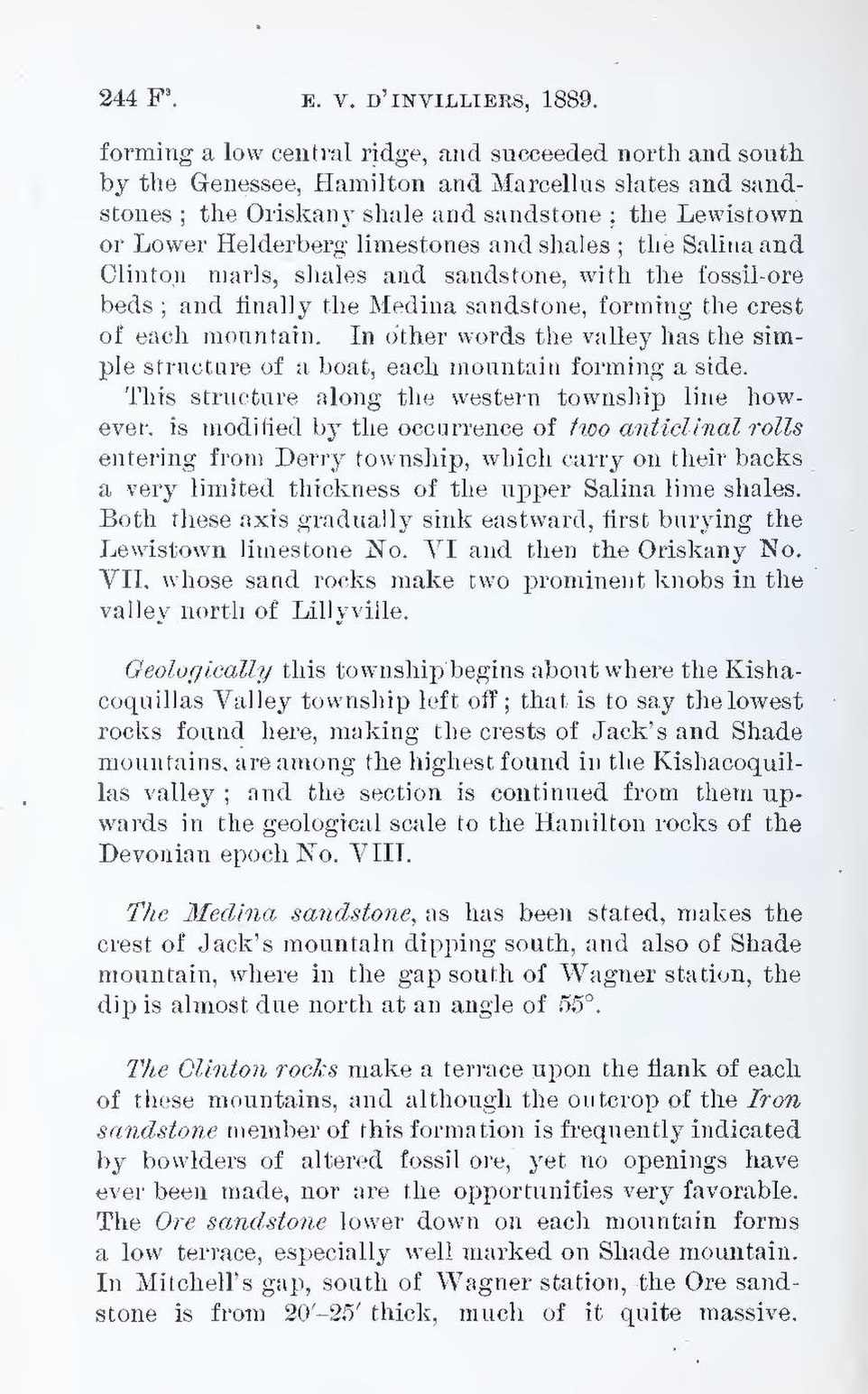forming a low central ridge, and succeeded north and south by the Genessee, Hamilton and Marcellus slates and sandstones; the Oriskany shale and sandstone; the Lewistown or Lower Helderberg limestones and shales; the Salina and Clinton marls, shales and sandstone, with the fossil-ore beds; and finally the Medina sandstone, forming the crest of each mountain. In other words the valley has the simple structure of a boat, each mountain forming a side.
This structure along the western township line however. is modified by the occurrence of two anticlinal rolls entering from Derry township, which carry on their backs a very limited thickness of the upper Salina lime shales. Both these axis gradually sink eastward, first burying the Lewistown limestone No. VI and then the Oriskany No. VII, whose sand rocks make two prominent knobs in the valley north of Lillyville.
Geologically this township begins about where the Kishacoquillas Valley township left off; that is to say the lowest rocks found here, making the crests of Jack’s and Shade mountains, are among the highest found in the Kishacoquillas valley; and the section is continued from them upwards in the geological scale to the Hamilton rocks of the Devonian epoch No. VIII.
The Medina sandstone, as has been stated, makes the crest of Jack’s mountaln dipping south, and also of Shade mountain, where in the gap south of Wagner station, the dip is almost due north at an angle of 55°.
The Clinton rocks make a terrace upon the flank of each of these mountains, and although the outerop of the Iron sandstone member of this formation is frequently indicated by bowlders of altered fossil ore, yet no openings have ever been made, nor are the opportunities very favorable. The Ore sandstone lower down on each mountain forms a low terrace, especially well marked on Shade mountain. In Mitchell’s gap, south of Wagner station, the Ore sandstone is from 20′–25′ thick, much of it quite massive.
